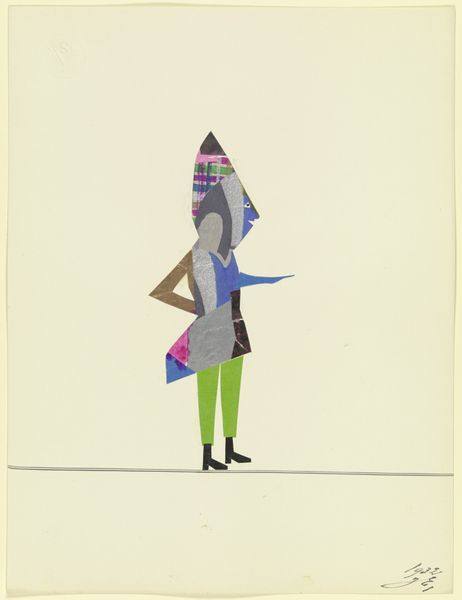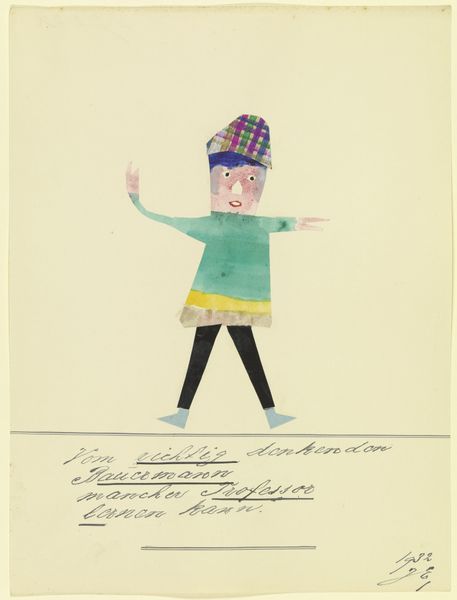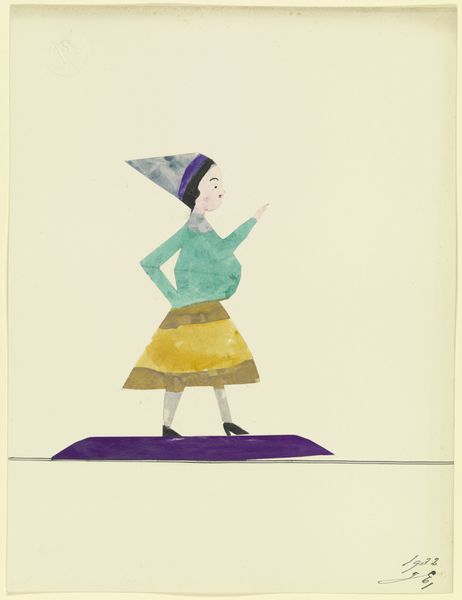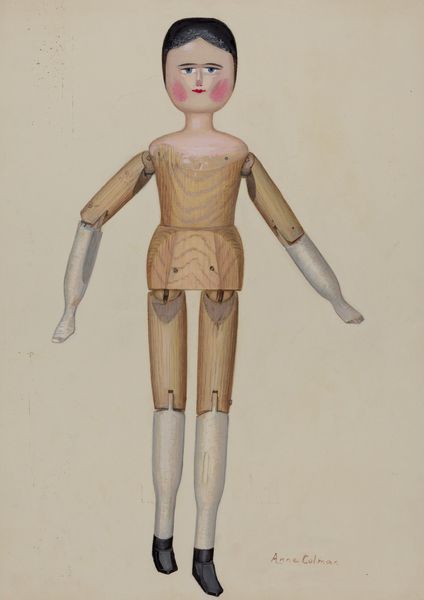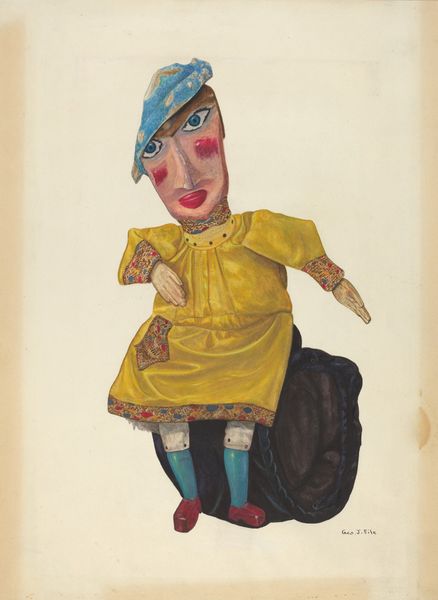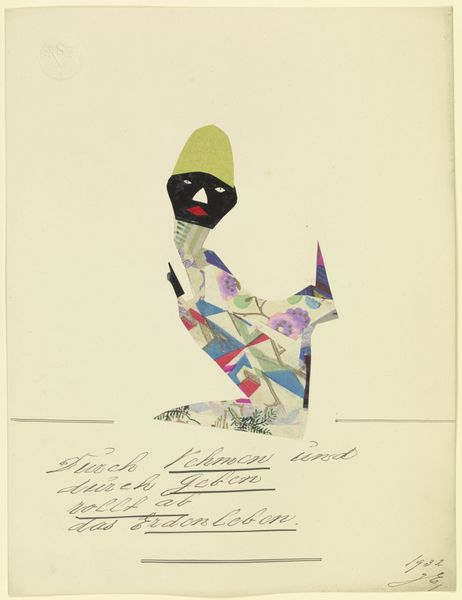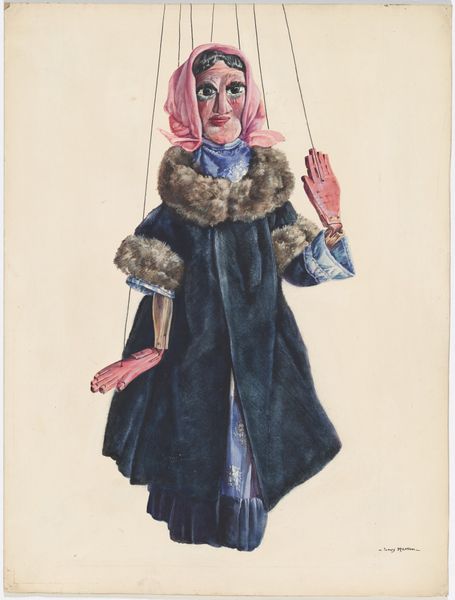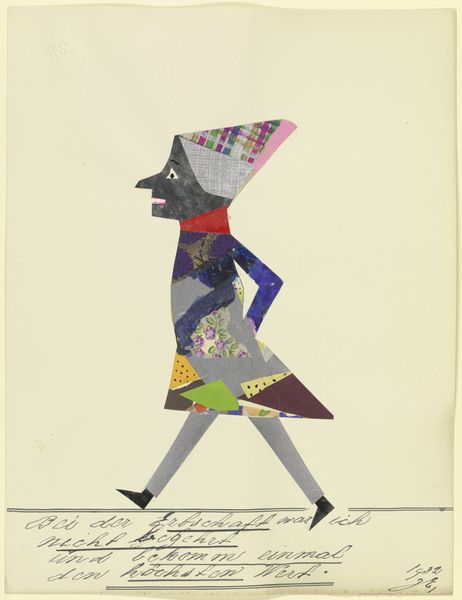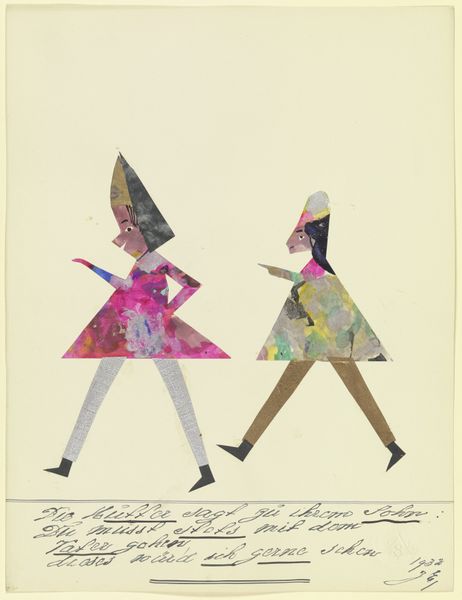
Copyright: Public Domain
Curator: Welcome, everyone. We are looking at a work titled "17653 (Wer mir hat ein Leid getan...)" which translates to "Who has done me wrong..." Created in 1932 by John Elsas, it employs a mix of drawing, collage, gouache, ink, and paper. The piece is currently held in the collection of the Städel Museum. What are your initial impressions? Editor: Striking! The use of colour and mismatched collage fragments create an immediate sense of disjointedness, almost unease. There’s a rawness to it that's hard to ignore. Curator: The composition certainly embodies characteristics of Expressionism, doesn't it? Observe the flattened perspective, the bold colour choices. The formal elements underscore the sense of psychological disruption or emotional intensity. Editor: Absolutely. And consider the figure itself – seemingly a female figure depicted in a way that distorts the traditional form of portraiture, but yet still a somewhat archetypal matriarch in some way. The juxtaposition of patterns in her attire; her almost severe expression. This layering resonates with potent historical and perhaps even mythological undertones. It's a powerful exploration of some sort of symbolic authority. Curator: I'm fascinated by the collage elements themselves. The patterned papers, for instance. Their tactile qualities invite speculation. Notice how the artist employs various visual textures. They disrupt the flatness of the image. This push and pull between materials really reinforces its spatial ambiguity, too. Editor: And the title, "Who has done me wrong...", is poignant considering its historical context. Dating to 1932, just before the escalation of the Nazi regime, there’s a clear allusion to the rise of darkness. The distorted facial features coupled with those stark colours becomes an emblem of trauma. Curator: Indeed. The fragmentation can be understood in light of that history, with the semiotic weight attached. One can sense the artist grappling with social and political realities of the time. The figure becomes more than just a representation; she is an allegory of grief and of warning. Editor: Agreed. Examining the symbology reveals more about that cultural and psychological anxiety within Expressionism as an era. Curator: Well, it’s been illuminating to delve into the artistic choices made in Elsas' "17653." Editor: Absolutely. Considering its historical setting helps deepen appreciation for the emotional depth imbued in the work. Thank you for sharing your thoughts.
Comments
No comments
Be the first to comment and join the conversation on the ultimate creative platform.
